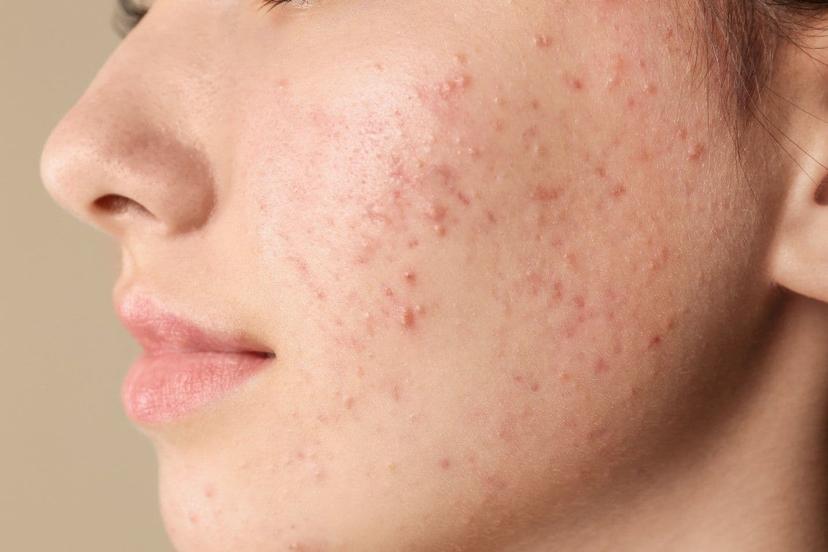MakeO blog
Hyperpigmentation is a common concern these days among many Indian men and women. It is characterised by dark patches on your skin which make your skin appear uneven. These patches result from an excess production of melanin. Melanin is the pigment responsible for your skin and hair colour. While there are countless treatments available, chemical peels have emerged as a popular option that many people are considering these days.
Wondering what exactly is a chemical peel for hyperpigmentation, and how does it work? Let's dive in.
Can Chemical Peels Treat Hyperpigmentation?
Chemical peels have become a sought-after remedy for hyperpigmentation, and for good reason. At its core, a chemical peel involves the application of a specialised chemical solution to your skin's surface. This solution causes a controlled injury to the skin, leading to the top layers of the skin to shed. As these layers peel off, they pave the way for newer, healthier skin cells to surface. This regeneration process not only reveals a fresher layer of skin but also helps in evening out skin tone by diminishing the appearance of dark patches.
But how does this specifically treat hyperpigmentation? Hyperpigmentation is caused by an overproduction of melanin in certain areas of the skin. As the chemical peel for hyperpigmentation accelerates the skin's natural exfoliation process, it helps in scattering the pigment cells and reducing the concentration of melanin in the affected areas. Over time with a series of treatments, these dark patches fade, resulting in a more uniform and radiant complexion.
Top 5 Chemical Peels to Treat Hyperpigmentation
1. Glycolic Acid Peel
Derived from sugar cane, glycolic acid is an alpha hydroxy acid (AHA) popular for its exfoliating properties. A glycolic acid peel penetrates the skin deeply, making it effective in treating hyperpigmentation. Regular Glycolic Acid Peel treatments can help fade dark spots and improve skin texture.
2. Lactic Acid Peel
Another AHA, lactic acid is derived from sour milk. Lactic acid peels are milder than glycolic acid peels, making them suitable for individuals with extremely sensitive skin. They gently exfoliate the skin, reducing the appearance of hyperpigmentation over time.
3. Salicylic Acid Peel
A beta hydroxy acid (BHA), salicylic acid is oil-soluble, allowing it to penetrate oily skin and unclog pores. Apart from treating acne, a salicylic acid peel can also address hyperpigmentation, especially post-inflammatory hyperpigmentation often seen after acne breakouts.
4. TCA Peel
Trichloroacetic acid (TCA) peels are medium-depth peels that can treat numerous skin problems, including hyperpigmentation. Note that TCA peels penetrate deeper than AHAs and BHAs and hence they offer more dramatic results. However, they may need a longer downtime after the procedure.
5. Mandelic Acid Peel
Produced from bitter almonds, mandelic acid is an AHA that's less potent than glycolic acid. Remember that it is especially beneficial for those with darker skin tones, as it reduces the risk of post-peel hyperpigmentation. Mandelic acid peels can significantly fade dark spots and improve overall skin tone.
Try makeO skin(formely skinnsi) Peel Today
In conclusion, building an intensive skincare routine for hyperpigmentation requires knowledge and the right products. As mentioned above, chemical peels for hyperpigmentation, especially those from trusted brands like makeO skin(formely skinnsi), can be a game-changer in your fight against hyperpigmentation. Remember, every skin is unique, so always consult with a dermatologist before starting any treatment.
While the above-mentioned peels are all effective in their own right, if you're looking for a quick solution tailored for hyperpigmentation, consider the makeO skin(formely skinnsi) peel.
Designed with the unique needs of Indian skin in mind, the makeO skin(formely skinnsi) peel combines the power of multiple ingredients to offer a balanced and effective treatment. Not only does it treat hyperpigmentation, but it also replenishes the skin, giving it a radiant and youthful look and feel. Remember, it's not just about treating the skin concern but also about replenishing your skin. With makeO skin(formely skinnsi) skin treatments and products, you're in safe hands!
FAQs:
How often should I get a chemical peel for hyperpigmentation?
Depending on the type and strength of the peel, you might require sessions every 2-6 weeks. For deeper peels like the TCA peel, you might only need a chemical peel session once or twice a year.
Are there any side effects to a glycolic acid peel?
Some individuals might experience mild reactions like redness, irritation, or mild peeling post-treatment. It's essential to follow post-peel care instructions and use sunscreen diligently to prevent or minimise the possibility of experiencing these side effects.
Can I use make-up after a lactic acid peel?
It's advisable to avoid make-up for at least 24 hours as part of chemical peel aftercare to let the skin heal and breathe.
Is a salicylic acid peel suitable for all skin types?
It is particularly beneficial for oily and acne-prone skin. However, we recommend you conduct a patch test before a full-face application.
How does a TCA peel differ from other peels?
A TCA peel is a medium-depth peel, meaning it penetrates deeper than most AHAs and BHAs. It offers more pronounced results but may come with a longer recovery period
related categories
Related articles

Anti-Ageing Face Oils: Unveiling the 10 Best Facial Oils for Youthful Skin

Is Aloe vera effective for acne? Find out

5 Common Mistakes to Avoid When Using a Face Roller

5 Side Effects of Hair Removal Creams That You Must Know

